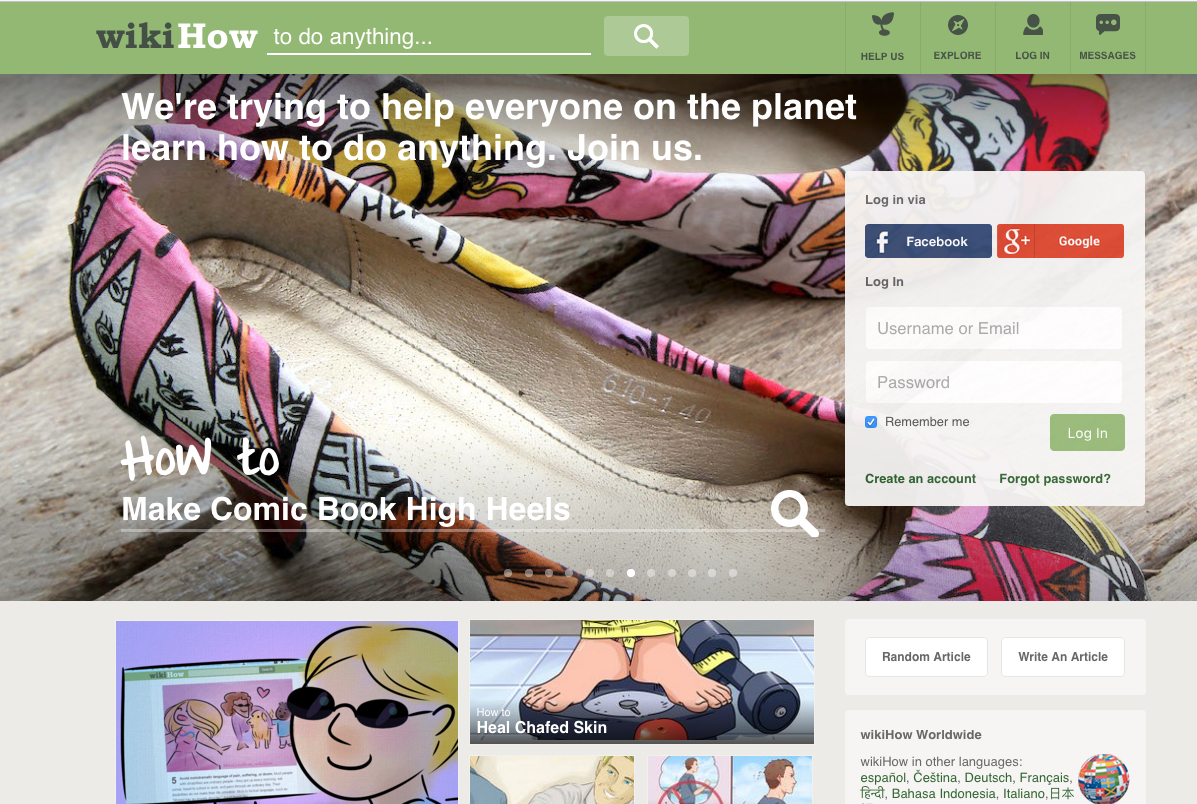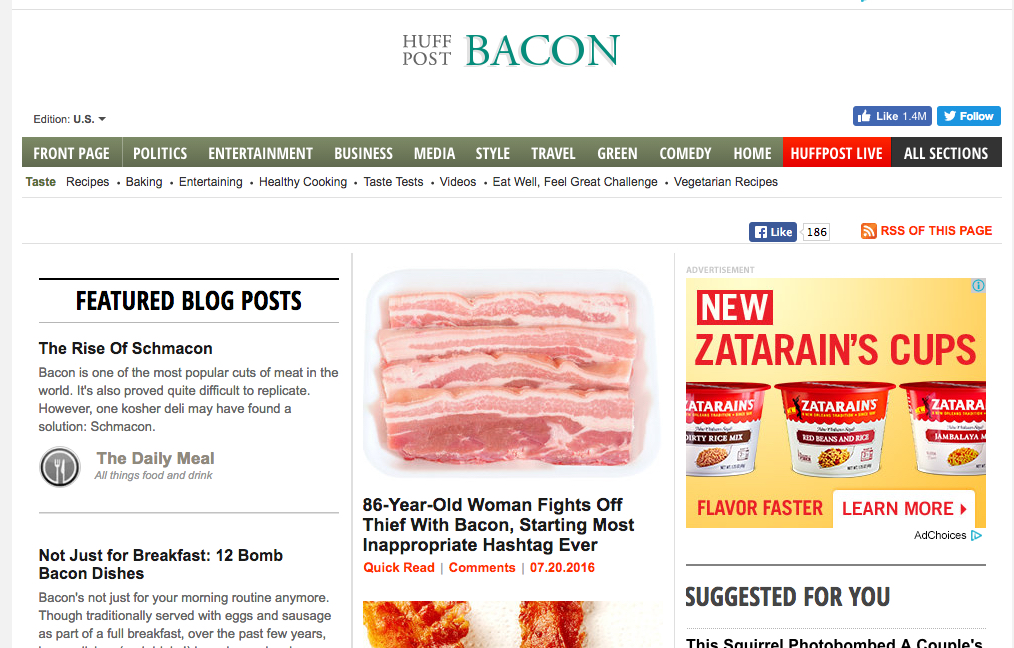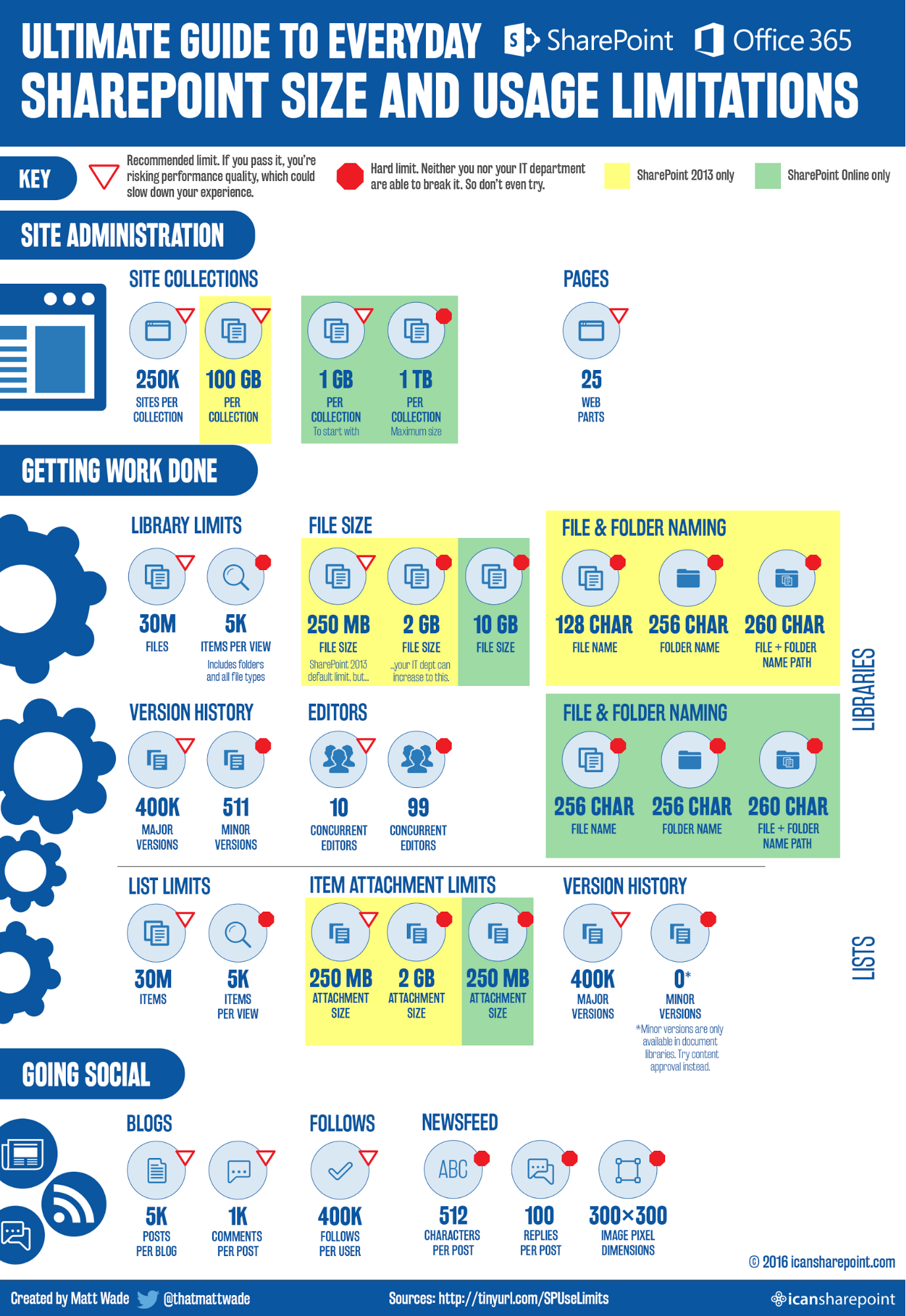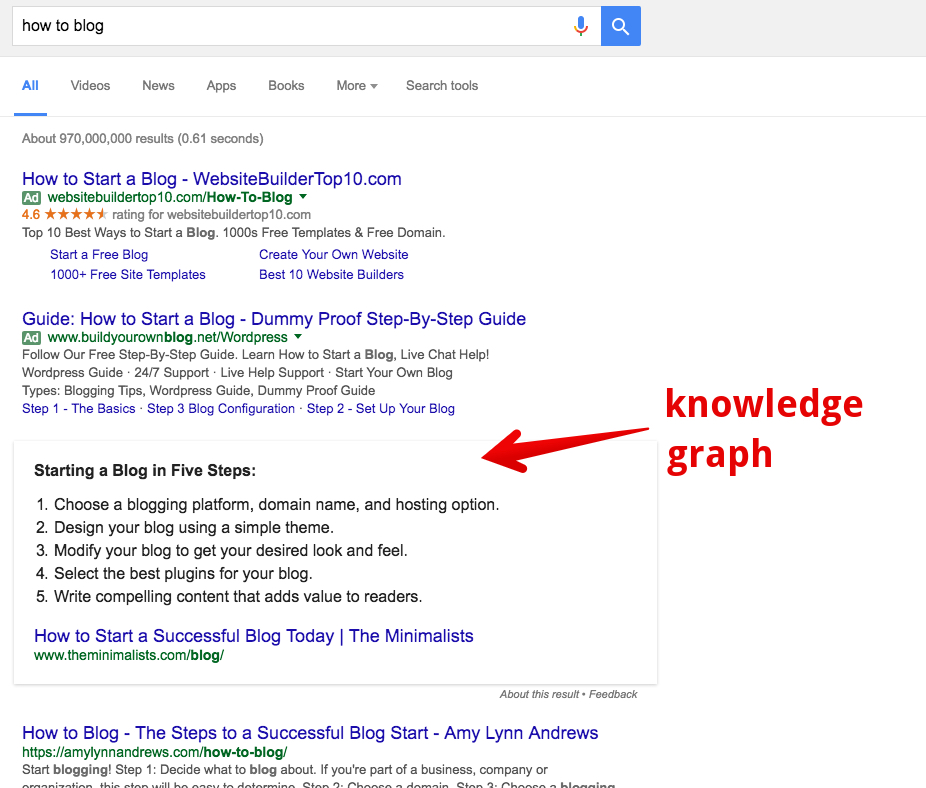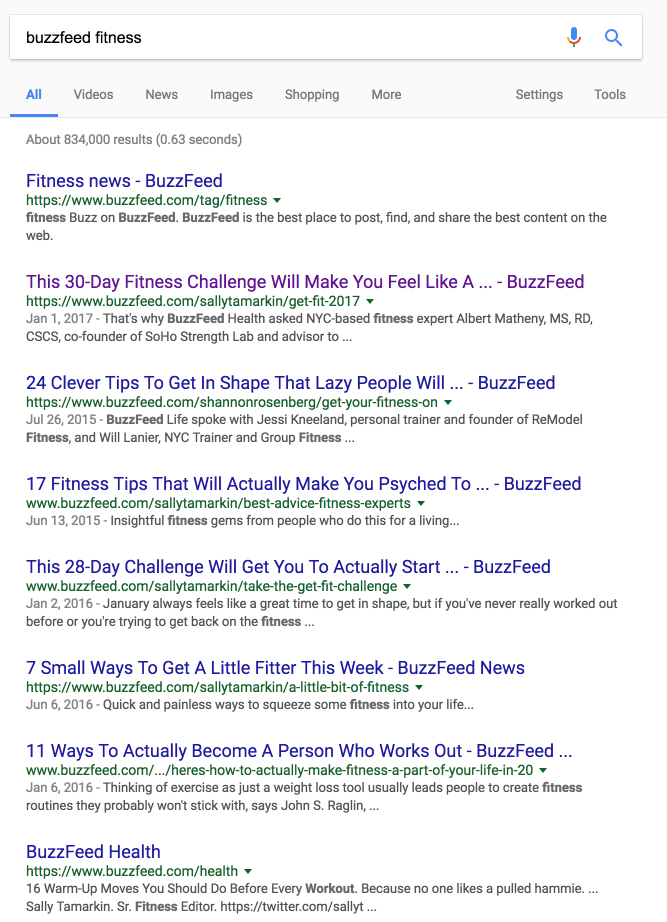Blogging with a purpose increases market share, consumer engagement, revenue growth, and ROI. Of course, you want to do that.
Just look at this:
But once they start the blog, a lot of people we know are still stuck on the fundamental question:
What do we blog about?
Here is a list of 35 types of articles, topics, and approaches that have demonstrated massive success for bloggers in the past and will continue to do so in the future.
1. How To Guides
People generally hate reading instruction manuals. When was the last time you snuggled up with a glass of wine and the instruction manual to your toaster?
How do people figure out how to do stuff?
They Google it.
WikiHow became insanely popular based on how-to articles alone.
You might be surprised to see the kind of things people are Googling.
If you can find your niche audience, cater to their curiosities, and give them some helpful answers, you can’t help but create a popular blog.
2. Politics
Politics are popular during every election year. Whether national or local, find a political topic to discuss, and join this conversation.
Politics can be dicey, however. People tend to get really polarized around political topics, so be prepared to handle some controversy.
3. Bacon
Everyone loves bacon.
Huffington Post is one of the most popular blogs online, and it has an entire archive of bacon articles.
It’s not a trend going away soon, so get on board.
4. Recipes
Recipes are a great way to draw traffic to your blog.
There’s always a new diet fad, e.g., today’s Whole30 is yesterday’s Atkins, so there’s always new recipes to be discovered.
5. Beginner guides
Before you can convince someone that you know the advanced stuff, start with 101 beginner guides.
Our own beginner guides have been very popular.
Everyone has to start somewhere. Beginner guides are often the way bloggers build organic search traffic at the start, and they can even be done using infographics like this guide to Sharepoint.
6. Ultimate guides
Subject matter experts, on the other hand, are always seeking out the most credible ultimate guides for their areas of expertise.
The term “ultimate guide,” however, is a bit overused. You can use some alternate terms if you want, such as these:
- Essential Guide
- Complete Guide
- Uncensored Guide
- Last Guide to ____ You’ll Ever Need
Whenever you’re writing an informative guide, back it up with statistics.
Use data only from authority sources, and give them credit for the information.
Adding data to your guides shows your readers your content is legitimate.
You didn’t just pull ideas out of thin air. You took the time to conduct research and then formed opinions based on your findings.
We use this strategy all the time. Before we take a stance or give advice, we find numbers to back up my claims.
If you are interested in doing original research, consider highlighting your case studies in a blog post.
This will help you get traffic from organic searches as well as through backlinks whenever another site uses your study as a source of information.
If you’re an expert on something, creating an ultimate guide is an ultimately awesome way to do some ultimately popular blogging.
7. Frequently asked questions
Be warned that posting answers to frequently asked questions online won’t stop people from asking anyway.
They do, however, serve as a resource for people, and they are often featured on ecommerce websites—but overlooked on blogs. FAQs are blogging gold in any age.
Google’s algorithm uses FAQs, questions, and other popular topics as part of its Knowledge Graph. If you’re lucky, you might score a top spot in this coveted place.
8. Interviews
The best way to set yourself apart from the ocean of bloggers is to gain insight from industry experts.
Whether it’s with people on your team or from other companies in the industry, set up interviews on websites like helpareporter.com to gain valuable knowledge from a professional.
Thankfully, you don’t have to be in the same room as your interviewee to talk to them. Come up with a list of questions your audience would be curious about, and email it instead. You could also post the questions via Twitter or another social media channel.
9. Personal stories
While personal stories may not be the keyword-filled anchor pieces you want, they’re still valuable additions to any blog.
Through sharing personal stories, you give readers a chance to relate to your business on a personal level, which helps build brand affinity.
Learning how to tell a story is an art. Once you master this skill, the quality of your blog posts will improve.
A great story will keep your readers on the edge of their seats.
You need to understand the impact storytelling has on our brains:
When readers have an emotional response to your story, dopamine gets released from their brains.
Use this information to your advantage. The best stories are written to elicit some type of emotion, whatever that may be.
The choice is up to you. Maybe you want your readers to feel sad or angry while they’re reading your posts. And some of you may prefer to evoke joy, surprise, or love.
If you can make your readers feel emotions, they’ll be more likely to continue reading the blog.
As a result, they’ll come back to read more in the future.
Depending on the nature of your story, it can also generate traffic based on curiosity alone. For example, if we saw a blog post that said something like “How I Caught a Shark With a Pair of Jeans,” we would be very inclined to click on it to find out what happened.
10. Charity and activism
Any type of charitable actions, events, or activism you support should be blogged about.
Crowdfunding sites such as KickStarter, IndieGoGo, GoFundMe, and the like appeal to the good in people, and showing you’re active in these communities can build your readership. Even an occasional Change.org petition can help the brand image.
11. Product reviews
Reviewing products and services is another great way to drive traffic to your blog. Not only are product reviews a trusted resource online that will draw traffic, but they are also a revenue stream for bloggers.
If you want to monetize your blog instantly, this is a smart move.
By linking to product pages through affiliate links like Amazon Affiliates, you can monetize a blog almost entirely on product reviews. Make sure you go niche, since this provides the greatest platform for credibility and expertise.
Here’s an example of a recent blog post from TechRadarthat reviews multiple products in the same post:
There are a few different ways to decide what products to review.
For starters, you could review items your company sells. The only issue with this strategy is that people will know your opinion is biased. You won’t post an unfavorable review about something you’re selling.
But if your blog covers a specific industry, you can review new releases. Make sure the reviews are relevant.
Refer back to the example above. The article is reviewing the most recent iPhone products at the time. It wouldn’t make sense to review models released ten years ago.
If you decide to review products on a regular basis, establish a flow to such posts so your readers know what to expect.
Start with a product overview, and explain what the product does. Then, you can discuss specifications and other details. List the price and where it can be purchased.
The review should have some form of a pros and cons list. Reviews should ultimately express your stance on the item. For example, you can explain which people would benefit most from the product.
12. Breaking news
Use your blog to discuss breaking news topics.
Don’t get us wrong, we’re not saying you should try to compete with actual news outlets. But you can still write about recent events.
When it comes to breaking news, timing is everything. Being the first one to break a story isn’t always the best.
Sometimes you’re better off waiting to publish your content until all the facts are straight. You don’t want to get a reputation for posting unreliable information.
Here’s an example of a news story published on the TechCrunch blog:
Make sure your news story is relevant to your business.
For example, let’s say you run a fashion blog. A breaking news story about a technological advancement isn’t related to your brand, so don’t write about it.
13. Myth-debunking
Every industry has facts and fiction, which is why shows like Mythbusters got so popular.
We love learning what we’ve been doing or thinking wrong this whole time, so popular bloggers debunk myths.
What are some common misconceptions or myths regarding your industry or niche? Compile a list, and then use it to create a really fascinating post for your audience.
Make sure you back up your claims, though. Otherwise, readers will lose their interest when they realize they’re reading the rants of someone who really doesn’t know what they’re talking about. Approach writing such an article with the intention of providing as much useful and usable information as possible.
14. Automation
For B2B businesses, automation is the buzzword of the day, so any posts regarding ways to automate something is Internet gold.
Automation, of course, is broad. You’ll need to select a type of automation in order to drive truly valuable traffic.
15. Troubleshooting guides
We’re always on the lookout for reliable troubleshooting tips.
Troubleshooting guides speak to the pain many content seekers are looking to eliminate. They want to solve a problem, which is exactly what a successful troubleshooting guide will do.
16. Contests
A great way to draw interest in a blog while rewarding readers is by holding a contest.
Contests once got a bad rap as being scammy or cheap, but they are on their way back as a valuable traffic-driving technique.
17. Advice
Both Lifehacker and Lifehack rose to prominence by featuring valuable advice to readers on just about every subject.
Life advice, regardless of the subject matter, is a valued commodity.
18. Productivity tips
People want to do more faster and are always on the lookout for tools, technology, or tips to help them get more done. Productivity tips are the bread and butter of many online blogs.
If we told you we could make your days longer and you’d be able to finish more work, make more calls, etc., you’d be interested, right?
Of course, you would. Time is important.
It makes sense then that we’re attracted to content focused on gaining more time.
In your upcoming blog posts, incorporate interesting productivity tips, whether showing how your product or service increases productivity or sharing which productivity tips and tricks are working for you.
If you’re familiar with Michael Hyatt’s blog, you’ve probably seen this work. Michael Hyatt is a leadership development expert, but he publishes a lot of productivity-related titles.
This isn’t an accident. Hyatt knows that productivity topics get shared.
People love sharing practical content that they can vouch for and others can use.
19. Travel
No matter how connected we get, travel will always be a popular topic for online searches.
With about 151,814,305 million passports in circulation in the U.S. today, you know people are traveling—or at least they want to.
We all want to travel somewhere exotic and new. Any advice on how to do it cheaply is always appreciated.
Start thinking about what you would want to read.
Depending on the season, you can write about physical locations your audience might search for, say, Jamaica.
If you’re a company that has this information on Jamaica on your blog, take advantage of that. Take control so your blog becomes a frequent destination.
What kind of blogs would benefit from travel-related articles? It might not be that hard to find a connection.
So, give travel a try, fitting it in however you see appropriate, and you’ll likely get some social sharing among an interested audience.
20. History
History lessons are a great way to fill a blog with useful information.
Long-time bloggers often get caught up on current events, so occasional forays into history help create consistent content.
21. Gifs and memes
It wasn’t just listicles that made Buzzfeed so popular.
Memes and gifs are widely used on the site too.
Gifs give people the experience of a video and usually provide a ton of entertainment.
22. Funny stories
There will always be a place for humor in this world.
Posts that make people laugh get shared on social networks. There’s a reason why Buzzfeed, The Onion, Clickhole, and BoredPanda are among the world’s most popular websites.
23. Parenting tips
There will always be parents around, and any parenting tips are appreciated.
Blogging moms have conferences and conventions around the country, teaching people to follow in their footsteps and growing a sustainable industry.
Dad bloggers are also coming into their own as popular and respected places of information.
24. Upcoming events
You can always tell when an event is coming up by the buzz in the blogosphere. Whether it’s global events like the Olympics or local events like a concert or book-reading, events saturate many of the most popular online searches.
25. Internet stars
Partnering with and featuring the biggest Internet stars helps grow your following, so many content creators are partnering up in order to stay competitive. If you don’t know who PewDiePie and The Fine Bros are, it’s time to do some homework.
26. Tech support
Companies that offer technology services, hardware, or software will often include technical support within their blogs.
Microsoft, Google, and Facebook have extensive knowledge bases online, and they’re only growing along with everyone else’s.
27. Gift ideas
Right about now, blogs around the Internet are preparing holiday gift guides to help guide consumers to the right presents to buy for their colleagues, friends, and family during the holiday season.
Affiliate links can help create revenue for these cornerstone articles.
28. Best-ofs
The best ____ of [year], the 2000s, this century, and of all time are all great articles to read.
WatchMojo built an entire business on top 10 lists, and many others are following suit. Including best-of lists focused on everything within your industry is a great way to draw reader attention.
29. Respond to readers comments
People have always been interested in getting advice from publications, whether it’s from old-school advice columnists such as Ann Landers or new-school ones such as Dan Savage.
Responding to readers makes you a real person having a real conversation and allows you to address individual concerns to prove you care.
30. Lists
Lists are another common type of blog post.
We use lists all the time. In fact, what you’re reading right now is one of our lists.
One of the reasons why list posts are so popular is that your readers know what to expect. They can scroll through each point on the list without having to read through the entire thing.
Readers like it when content is straightforward and organized.
Vary the formula for writing titles of list posts. Here are some examples to show you what we’re talking about:
- 21 Ways to Prepare Chicken
- The Top 6 Types of Bicycle Tires
- How to Travel on a Budget with These 13 Tips
The list goes on and on, pun intended. But you get the point.
Changing the position of the number within the title of your list ensures your content doesn’t appear stale. If someone looks through your blog and sees that each title starts with a number, they may not be interested in reading it.
Switch up the numbers as well. While top ten lists may be popular, they can get boring too.
Google the topic before you start writing. Try to come up with a list longer than other lists in the search query. This will give you an advantage over your competitors.
31. Infographics
As we’ve said before, you need to incorporate visual content into your blog posts.
But you can take this strategy to the next level by publishing blog posts that are almost exclusively infographics.
You probably have plenty of facts and statistics about your niche and industry at your disposal. Put relevant ones together, and use them to create an eye-catching infographic to share on your blog.
Other websites are always looking for content that will help improve their blog posts. If you can come up with relevant, accurate, and visually appealing infographics, these sites will use them in their blogs.
As a result, you’ll get credit for the image source.
People who see your infographics on other sites may be inclined to click the link to visit your website. Furthermore, these links will also improve your SEO ranking, which I’ve previously discussed.
If necessary, hire someone to create it for you. Include it in a new blog post, and then provide commentary about the facts and statistics within the body of the post. Encourage sharing by providing an easy link for people to use.
32. Fitness
Face it, there are mobs of people out there who would love to just wake up with six-pack abs. That’s why there’s always something new to help get you there.
As long as science continues to discover new things, there will be new breakthroughs to talk about—perfect fodder for shareable blog posts!
Blog posts about fitness have historically been one of the most shared genres of content on the web.
Buzzsumo, the social sharing giant, reported this about 2015 content popularity:
Who doesn’t want to get healthier? Health was a popular topic in 2015. Interestingly, three of the most shared posts on BuzzFeed this year were about health, as seen below.
They explain that the viral element of these articles was the topic of the content: health, diet and fitness tips.
Buzzfeed knows a thing or two about shareable content, and they were the clear leader in the socially-shared fitness topics.
A quick search for “buzzfeed fitness” produces over 800,000 results:
There are tons of shares on each one of these.
Depending on your industry, blogging about fitness can work well.
Begin this process by searching Google for the top fitness blogs, and scour them to find out what the fitness industry is talking about. Write a post from this, relate it to your business, and that’s it. Simple.
33. Share your secrets
No, we’re not telling you to give away all your secrets. Rather, connect more deeply with your audience by giving them information about your business practices and processes “from the horse’s mouth.”
It’s all about transparency and authenticity, and it resonates strongly with readers. People enjoy feeling like they are privy to special knowledge.
34. Start a series or a regular feature
Some topics are so extensive that they can’t be covered adequately in a single post—not even a long-form one. When you run across one of these, consider breaking it up into a series for your readers. Create cliffhangers at the end of each one to keep them coming back for more.
You could also come up with a weekly or monthly feature for your blog. For example, you could highlight happenings regarding your niche in social media every Monday, or you could feature a new product or service every month.
35. Share customer success stories
With any luck, satisfied customers will occasionally contact you to express their appreciation. When this happens, ask them if you can feature their comments in a blog post for your business.
In this type of post begin by describing the problem the customer was facing. Describe the product or service they used, and then explain how they were able to solve their issue by using it. If possible, include additional comments from the actual client to make the post especially engaging.
Conclusion
Popular topics come and go.
You might pick a technique today only to find it went into disfavor the next day. That’s part of the excitement and drama of blogging. You’ll deal with it, pick up your traffic, and move on.
The topics, techniques, and tactics listed above are virtually guaranteed to make you the world’s most popular blogger.
Maybe you’ve got all the traffic you need. Maybe you have the audience you want. Maybe you’re content.
But if you want to see some improvement, it couldn’t hurt to try a few of these.


